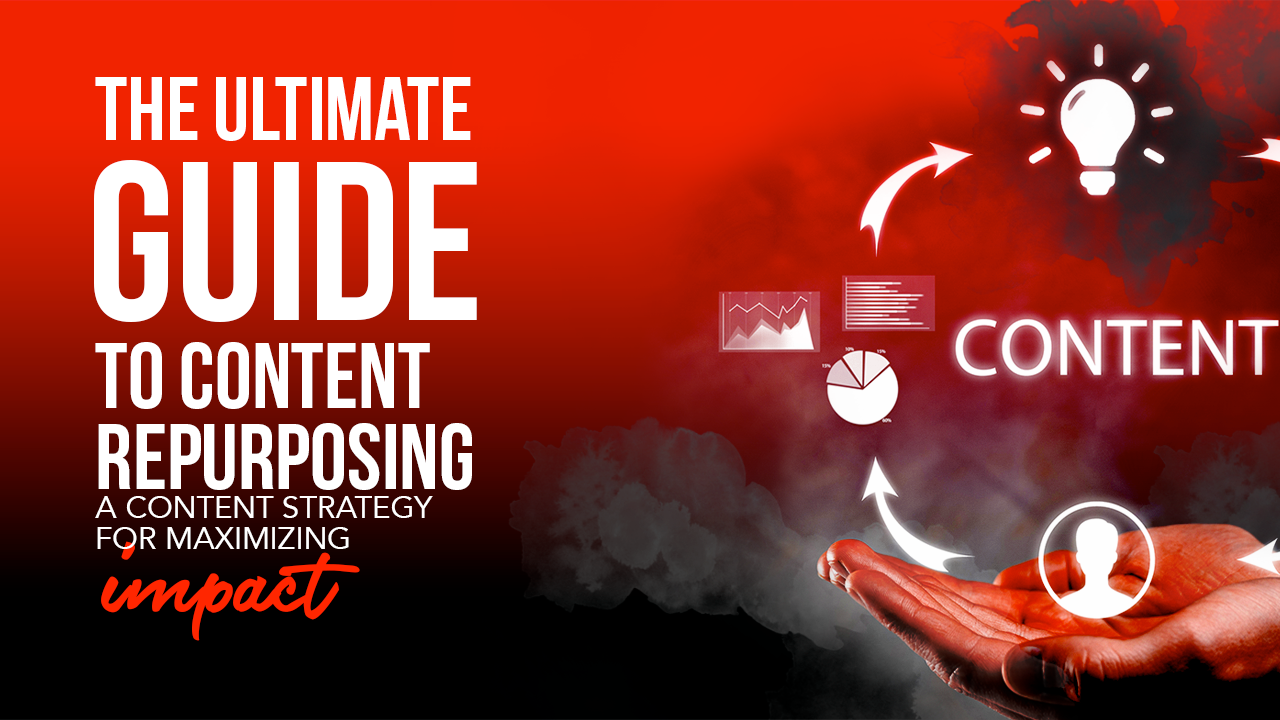[vc_row][vc_column][vc_column_text]
There is absolutely no denying that blogs are indeed a fantastic tool to attract potential clients to your digital domain and boost your revenue. This is great news!
However, on the flip side, generating traffic for your blog is barely half of the battle. Comments, tweets, and likes are all nice; however, none of these is your ultimate objective. What you need is to convert the traffic you receive on your blog into paying clients and customers.
Keep reading if you are interested in learning about how you can not only draw visitors but also get clients by writing blogs and tracking their performance so you’re not wasting marketing budget.
Know Who Your Ideal Client/ Customer is
This is the very first step you ought to take, even before starting the blog writing process. It is vital to know who your ideal client is prior to writing a blog to attract the said client.
This goes further than being aware of the clients’ demographics (gender, age, income, and so forth). Although this data is a good point to start, it does not reveal why anyone would purchase your product or hire your services.
Every service or product sold is a solution to a certain problem. Hence, to create quality content that draws your potential clients/customer, your first step should be to define the precise problem which the client is looking for a solution to. To be able to write a blog post that genuinely helps your clients, you need to understand them well.
The following are some of the important questions you need to ask yourself at this stage:
- What is the common denominator amongst your favorite clients?
- How do your potential clients/readers describe the issue or problem that they have?
- What are your clients’ objectives?
- Which are the problems that they face that your service or product is an answer to?
- Which sources do they use to search for information that is your area of specialty?
Select Topics that Offer Solutions to Client’s Pain Points
The ideal topics for blogs that drive conversions are the ones that facilitate a client to resolve a pain point or answer a query the client might have.
As a case to point, you may target potential clients who would want to boost the customer service of their business or generate more sales revenue.
Subjects that revolve around common pain points are very effective at driving conversions and getting clients. This is because they target people who are on the lookout for a solution to a certain problem and are already in a ‘purchasing’ mind frame.
However, you should not dole out all the answers to the problem sour potential clients and customers might have. What you ought to do is to lay out a comprehensive framework for resolving a particular problem via actionable and useful information.
That said, you should leave sufficient space to include strong CTA’s (call to action). These CTAs should convince the blog readers to get further assistance or learn more by fulfilling a certain desired action. For example, you should urge them for a free trial, finalizing a purchase, subscribing to your email list, and so forth).
Create a Sense of Urgency
Did you ever purchase an item on sale because it was the very last one that was available on stock? Most of us have done so. The notion that something we desire very much and want is only available for a very brief period is often enough to convince us to buy that thing.
The following are some of the great tactics ways to add the element of urgency in your blogs:
Write your blog post with a sense of urgency. Begin the blog post in a normal fashion but as you approach your concluding remarks, begin to use shorter and concise sentences. Moreover, use short paragraphs as this makes the reader read quickly. This, in turn, increases urgency and makes the reader more likely to act on what he/she has just read in the blog post.
Another strategy you can employ is to instill urgency in your Call to Actions. This could mean sharing a time-sensitive discount coupon, offering a bonus gift, or simply reemphasizing the point that a certain product is available in limited quantity.
Use data-backed and relatable examples in your blog posts that show the importance and need for buying your product or engaging your services right now.
For instance, say your service/ product can help an organization slash down their churn rate by 25 percent within 30 days. Convert these statistics into a situation to which your blog visitors can relate. You can do this by showing how much profit and how many consumers they can if they do not use your product.
Do Not be Excessively Promotional
Needless to say, the prime purpose of blogging for businesses is to land clients and sell. However, this objective should not be too obvious to your blog readers. If you try very hard to sell your product service via your blog, you run the risk of jeopardizing your credibility and pushing away your clients and customers.
Selling should definitely be an element in an ideal sales blog but only in terms of impact. In other words, you should refrain from promoting your product continuously throughout the blog.
Customers purchase from businesses they trust, and the only means by which you can gain that trust is when you offer advice and useful information that establishes your position as the foremost authority on the core subject of your blog.
Once the customer is sure that you truly have complete knowledge of your blog subject, he/she will be more likely to spend on whatever else you are offering.
Create a Loyal Reader Base
It is important to know that loyal readers of your blogs usually tend to convert to paying customers before anyone else. These readers stoutly believe in what you have to say and fully appreciate whatever you are offering via your blog content. Hence, it does not take much persuasion to get them to convert.
You can employ the following tactics to boost your visitor loyalty:
- Constantly providing readers with quality content/information free of cost.
- Responding to every single email and message you receive from all of your blog readers.
- Giving a reply to the comments on blog posts. This shows that you care for your reader’s opinions.
Apart from the above-mentioned strategies that will go a long way to help you build a loyal reader base, making videos about your product/service is one tactic you should also definitely consider. Videos have a very high-perceived value, and this is why individuals are eager to watch them. You can incorporate these videos into your blog as well.
Format Your Blog for Readers who Prefer to Skim
Regardless of the purpose of your blog, you must format it to suit those individuals who prefer skim reading. All of us have limited attention spans. Hence, you must cater to readers who are inclined to glance through the blog content by drawing their attention to all the important blog sections. This is particularly necessary when the purpose of your blog is to drive conversations.
The general formatting rules are as follows:
- Your blog should comprise short paragraphs. Be sure not to write more than 3-4 sentences per paragraph.
- Wherever appropriate, use numbered lists, subheadings, and bullet points.
- Make use of images to divide the blog text and highlight your chief points.
- Select a font size and style that are easy to read.
- Capitalize those words and phrases that you particularly want the blog readers to pay attention to.
Walk your blog subscribers through a complete sales process
The next step after someone is on your mailing list is to walk him or her through a sales process.
The sales process type will be contingent on what your blog content is about. You must have a well-defined sales process (a series of clear steps that gives the person the opportunity to become a client/customer)
The following are some of the most effective ways of converting your blog subscribers into paying clients/customers:
- Offer your subscribers a consultation free of cost
- Invite them to a special webinar where you will show your product
- Point them to a sales webpage directly
- Offer them a lucrative discount
Tune the “Contact Me” Section of your Blog
This section of your blog plays a pivotal role in attracting potential clients.
A strong “Contact Me” section begins with appreciation. Salute your blog readers in a professional manner as your attitude matters a lot here. A common mistake most bloggers make is to pretend to be someone they are not. This approach will not work if you wish to earn a potential client’s trust.
Most of the blog readers prefer to reach out via the form in the section, whereas others favor the direct email option. You should put in your personal phone number through which readers may contact you. In addition, be sure to include your Facebook and Instagram fan page so that readers can get in touch with you through social media as well.
Ask potential clients and customers to fill out the form if they wise to engage your services, and you will circle back to them within twenty-four hours. Avoid promising anything that you cannot do, as that would tarnish your self-image.
If someone would like to be your friend, he/she can follow you on your social media channels.
Additional Tips to Nab Clients with Your Blogs
Your Writing Should Reflect your Personality
When writing your blogs, use narratives and stories and give it a personal touch. Depending on your blog content, you can also add humor to your writing. This helps to hook your readers, and they are drawn into reading more of your posts.
Update Your Blog Regularly
When potential clients and readers observe that you update your blog frequently, they will be more inclined to purchase your product or service. Clients tend to admire a blogger’s consistency in producing quality and informative content.
Inject Passion in your Writing
You need to infuse your passion in your blog posts if you wish to treat your blog like a paying client. Writing blog posts as a profession can often be dull at times. For instance, your blog posts are not going to be very riveting if your client is the owner of an electrical switchgear organization!
When you have your own blog, you also have the latitude to write about what you want. Your posts are sure to stand out to those who pursue your blogs when you instill passion in your writing. Furthermore, including vibrant images can also help you to connect with your readers and audience in a more engaging and relatable manner.
Also, your passion for your blog content helps to convey what you want to write. Potential clients and readers will notice your passion and will be more likely to convert into customers. Alternately, they can also engage your services to write similar content for their own websites or blogs.
Track, track, and track!
As a forensic marketer, I am always paying attention to metrics (as you may know). The following are trackers that your blog must-have, so you can run reports, check performance, and plan future content:
-
- Facebook pixel. Make sure your blog has a Facebook Pixel installed, along with custom events, so you can see important metrics such as article views and clicks on your call to actions. You can even build a custom audience from your article visitors.
- Google Analytics tracker. A tracker will allow you to gather information on your article visitors, the time they have spent reading, other pages they visited, and depending on your settings, you can set up goals and campaigns to find specific users’ behaviors.
- UTM codes. This tool allows you to easily add campaign parameters to URLs so you can track Custom Campaigns in Google Analytics. Watch the video below to see a quick tutorial on how UTM codes work.
Bottom Line
Writing blogs can prove to be a very profitable venture if you put your focus on converting your blog readers into clients and paying customers. Following the aforementioned tactics will surely help you to appeal to various clients.
Bear in mind that if you provide value to your readers via quality content, then the part where you try to convert them into customers and clients becomes a whole lot easier.
Invest in your blogs, and the readers will invest in you!
[/vc_column_text][/vc_column][/vc_row][vc_row][vc_column][vc_masonry_grid post_type=”post” max_items=”10″ grid_id=”vc_gid:1578345947542-2b588caf-a100-6″ taxonomies=”25, 365, 391, 219″][/vc_column][/vc_row]










